When Andrew Maas asked some fellow administrators to describe a typical day running their skilled nursing facilities, they all laughed. “There really is no typical day,” says Maas, RN BSN, LNHA, administrator at the Iowa City, Iowa-based Briarwood Health Care Center. “You have to be very flexible with your schedule and try to keep things prioritized.”
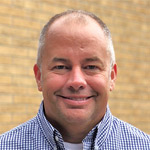
From overseeing staff and working with vendors, to helping make beds and engaging with residents, administrators are pulled in myriad directions each day. That’s part of the challenge—and reward—of the job that assumes ultimate responsibility for the health and well-being of patients, 24/7.
“A good administrator needs to be able to do a lot of different things,” says Maas, especially in small facilities such as Briarwood, which is licensed for 62 beds.
Maas starts his day reading emails and going through phone messages. Then he gets on the floor to check in with his director of nursing and other department heads.
His training as a nurse puts Maas in a slightly different position than administrators without the licensure. “When decisions get made that are clinical, I let the director of nursing and her assistant handle that as much as possible,” he says. “But I’ll be there for support if they have additional questions on what maybe needs to be done on a clinical aspect.”
In his office or out in the building, Maas notes, “You have to be flexible and willing to take things as they come.”
Going With the Flow
Stacy Neubauer, administrator of the Evangelical Lutheran Good Samaritan Society’s 53-bed skilled nursing facility in Alma, Neb., applies some well-honed multitasking skills to her job.
“I always go into work with a set agenda of things I want to get done,” she says. “I really have to keep a balance of being able to go with the flow, yet be productive, so I can make sure I do keep up with everything that’s expected of me.”
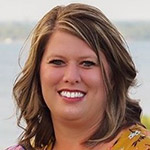
Neubauer makes the rounds of the building each morning, chipping in wherever the need arises. “I may make beds or push laundry carts and water carts,” she says. “I may push room trays or residents in wheelchairs. Whatever the needs are. My whole team does that, it’s not just me. I have a great team, and everybody knows that’s just how it rolls.”
Roughly one-fourth of Neubauer’s day is taken up with marketing duties. She also steps in for human resources, payroll, and social services if necessary.
Brenda Rice, administrator at Hebrew Home of Greater Washington, also oversees a diverse portfolio of duties at the 556-bed skilled nursing facility in Washington, D.C.’s Maryland suburbs. Her busy days include engaging in multiple functions with staff in nursing, recreation therapy, admissions, rehabilitation, and social work, to name a few.
“As an administrator, I am responsible for keeping the center running smoothly to assure that the highest degree of quality and financial performance is attained,” Rice says. “I interact with residents and their families. I am also responsible for the people providing care.”
Gathering for Meetings
While being pulled in many directions is a given, one constant for many administrators is the morning meeting. Such is the case for Samantha Vosloo, executive director of Palm Garden of Largo, a 140-bed skilled nursing and rehabilitation facility outside of Tampa, Fla.
“I debrief the department mangers on my expectations for the day,” Vosloo says of the gatherings with heads of departments overseeing maintenance, nursing and clinical, medical records, minimum data sets, social services, and others. She aims to ensure everyone is on the same page. “We go over key metrics and indications for success.”
Key metrics include who came in and who left; any incidents and accidents; and which residents may require additional attention, including those at high risk of falls, weight loss, skin issues, or heart conditions. Vosloo’s meetings also always include an educational component and focus on strategies to provide excellent service.
Bucking the daily meeting trend is Briarwood Health’s Maas, who holds two weekly meetings that focus on such things as department needs, staffing issues, and resident conditions.
“I found doing those meetings every day was tying up a lot of staff time,” he says of the reason to jettison the 15-minute dailies for the 30-minute biweekly meetings.
Under the current structure, department heads can discuss issues more in depth and offer suggestions on ways to change and improve procedures. In meetings, Maas encourages staff to “always do things the right way,” and act as if the facility was undergoing an audit or state inspection.
In lieu of the daily meeting, Maas says he keeps his door open all the time. “We really have an open communication, and we utilize email back and forth, even though we may be two doors down an office,” he says. “Our email and electronic medical record have a communication board that we utilize. Everybody knows to check that. That cuts back on the time you need to spend in the meetings.”
Making the Rounds
After wrapping up her morning meetings, Vosloo often spends the next three to four hours in her office answering emails from external and internal partners, as well as writing reports documenting the facility’s financial, staffing, and budget issues.
In addition, she regularly meets with family members, vendors, health care providers, and potential employees. Duties also include weekly meetings with each department to talk about short-term and long-term goals, and to make sure everyone is staying on track.
After her office hours, Vosloo will spend another four to five hours in the building. “I generally round twice a day,” she says. “I visit every new resident in the building. Whenever we have a new guest, I go out and meet with them and give them a membership card and talk with them about their first couple of days.”
Vosloo and other administrators say this is one of the most enjoyable parts of their job.
Management by walking around is probably the most powerful thing an administrator can do, says Jennifer Pryor, MA, MS, LALFA, co-director for the NAB-accredited Assisted Living Administration specialty area in Virginia Commonwealth University’s (VCU’s) master’s degree program in gerontology.
“It allows the administrator to truly be in touch with what is going on from the perspective of elders, staff, and family members,” she says. “It also allows the administrator to ‘take the temperature’ of the community on a regular basis and respond quickly to concerns. It’s also an opportunity to celebrate and praise others, which is highly motivational,” she says.
Big Challenge: Staffing Needs Endless
Days are busy attending to many details. But certain challenges appear to rise higher than others. The greatest challenge that many administrators face is that of staffing.
“Staffing definitely is a huge issue in our area,” says Maas, noting that Briarwood is located near a major hospital that employs roughly 2,000 nurses. In addition, two acute rehab facilities, with 40 beds each, are scheduled to open this summer. “They’re both actively recruiting staff,” he says.
But the biggest competition for registered nurses (RNs) comes from the hospital.
“Unless someone is really dedicated, and elderly long term care is what they want to do, they end up getting drawn to that hospital,” Maas says.
Case in point, Briarwood had two employees with their licensed practical nurse (LPN) certifications, and both had talked about how they wanted to stay on as they furthered their education. But after earning their RN licenses, each one left after about a month.
Getting Creative in Staffing
With staffing also a challenge in Nebraska, Neubauer says she’s forced to get creative with flexible scheduling to make the jobs more attractive. Among other things, she has implemented 12-hour shifts, with three days on and four days off, as well as shorter shifts that fit with parents who have to pick up their kids from school.
Neubauer also offers recruitment bonuses for current staff to bring in people. “When they bring in friends, it seems they stay longer,” she notes of the staff recruiting. “Whereas, if we have these huge signing bonuses for anyone, those people just walk in who we don’t know or have never seen, and that doesn’t always pan out.”
For his part, Maas conducts regular employee surveys to gauge his staff’s satisfaction. “If there is a trend of areas where people are not happy, we try to make adjustments. A lot of it has to do with getting to know the staff, getting to know the residents.”
Maas says this requires leadership to not think of each staff member as just another certified nurse assistant, but rather as a whole person: “That’s David who works down that hallway."
“If there is a family member who mentions David for being helpful, then you go up to him and say, ‘I just want to let you know you’re doing a really good job. One of the family members commented on how you made their mom feel really good when she was having a rough day the other day,’” Maas says. “Being able to do that and just recognize the staff [member] as someone important makes the difference.”
Seeing the Big Picture
Taking the holistic view is important when addressing other challenges, both internal and external. A skilled nursing administrator is the only person in the building who sees the whole pie, notes Vosloo.
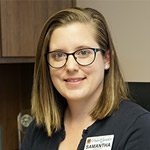
Internally, this perspective can help when different departments fail to understand how the other contributes to the overall success of the facility. “Getting them to see each other’s perspective is sometimes challenging,” Vosloo says. To overcome this, she may invoke the big picture to find solutions and compromises that ensure the best course of action for residents.
“If you have nursing versus culinary on an issue, and you’re trying to determine a work flow process that would be optimized, I have to get them to see they both are vital to make a whole. That’s the most challenging part of the job, internally,” Vosloo says.
Externally, she takes a big-picture approach to manage the expectation gap of customers and their families. Successfully bridging this gap requires working closely with community partners outside of the facility, including area hospital liaisons, to help them understand and set expectations for families considering skilled nursing for a loved one.
And an all-hands-on-deck tack is applied once a family and resident arrive at the facility. Vosloo recommends “overcommunicating” and making sure all staff are on the same page with the newcomer. Palm Garden of Largo does a preadmission huddle with all involved parties—nurse, manager, suite supervisors, admissions coordinator—to consult on a new resident’s needs, from dietary to mobility and more.
“We set clear expectations with our staff and the community, and hopefully we can manage those gaps more successfully,” Vosloo says.
Creating Person-Centered Care
Meeting and exceeding the needs and expectations of residents and families is a top priority at Hebrew Home of Greater Washington. Rice says, “We aim for the gold standard in everything we do, and that makes it a fulfilling job for me every day.”
To achieve those standards, Rice applies a leadership philosophy that ensures each team channels its individual talents into performance.
“Additionally, I believe in building teams up by focusing on employee engagement,” she says. “I do this by being visible throughout the residences and promoting a culture of excellence. Employee engagement must be a top priority for an administrator. Top leadership must embrace, support, and promote a person-centered culture that drives quality of care and good outcomes.”
Challenges go beyond meeting expectations and ensuring adequate staffing. Overcoming the bias of ageism can be a challenging hurdle.
“One of the most important things that an administrator must be aware of is how ageism is embedded in the culture of long term care services and supports, and the negative impacts that ageism has on health care outcomes for not only residents but for the staff working in these communities,” says VCU’s Pryor.
“By recognizing and addressing ageism in these communities, administrators can make progress to improving person-centered care; positive outcomes for residents; and job satisfaction, engagement, and career commitment for staff,” Pryor says.
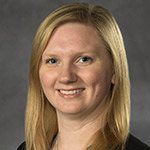
It takes strong leadership to make this happen. Pryor says administrators need to be both skilled leaders who can create change and innovate, as well as skilled managers who can create consistency and order.
“The key skill in all of this is maintaining an optimal balance between dynamism and consistency,” she advises. “Administrators need to be transformational leaders who recognize that taking a person-centered approach to residents can only be achieved by taking a person-centered approach to their staff. This means that really effective administrators are very focused on developing their people.”
Big Job, Big Rewards
The days are long, challenges are big, and fires to put out are many. But that’s not to say the work of an administrator is not without its rewards.
Neubauer has always had a passion for the geriatric population. “I do what I do every day for them. When you see in the news that these nursing homes are closing, and you see how it affects the elderly, that’s sad to me,” she says. “If I can make a difference in Alma, that’s what I want to do.”
For Vosloo, running her building is like running a small business.
“I really take pride and ownership in what I do,” she says, noting that she feels like a small business owner taking responsibility for everything in the facility. “Getting to contribute to the quality of life of a resident is huge, especially because I’m not a nurse,” Vosloo says.
“Being able to impact change in this community, which is really underserved and misunderstood, is very rewarding.”
Rice says she’s proud to be part of a nonprofit organization that embodies a strong commitment to long term care and rehabilitation.
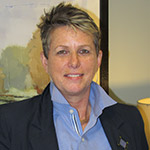
“Everyone here is committed to our vision to be the provider of choice for innovative programs and services that enrich and enhance the quality of life for older adults,” she says. “Our team knows how to create healing and meaningful experiences for those we serve. Our high standards and thoughtful approach to care receive consistent recognition such as earning Five-Star overall quality ratings from the Centers for Medicare & Medicaid Services (CMS) and being designated a U.S. News Best Nursing Home by
U.S. News and World Report.”
Satisfying residents, families, and staff are key rewards for Maas. He loved to hear a recent story from his director of nursing who mentioned how many people were saying good things about Briarwood.
“Just hearing that and knowing I’m making a difference is reward,” he says. “Sometimes I have to step back and take a look at all of this other stuff, it’s absolutely crazy and out of my control. How much does that matter when what is important are the residents, families, and staff.”
Future Challenges for Administrators
So what happens next? Potential Medicaid and Medicare cuts, nursing shortages, higher patient acuity, increased regulatory burdens, and an aging population are just some of the forces confronting administrators in the years ahead.
Eying these trends, many administrators are making the case now for greater reimbursement, especially in the face of funding cuts. In the future, Vosloo says, the industry is going to have to strike a balance between the regulatory burdens versus reimbursement rates. “As industry leaders, it is our responsibility to share with our legislators and community partners that we provide a vital service. We are necessary and impactful in our community.”
Neubauer also worries about reimbursement rates and potential cuts to Medicaid. “Not everyone can be private paying, and if we have all of these Medicaid people, can we afford to stay open?” she asks.
Her company tries to be proactive in opposing the proposed cuts. Neubauer recently wrote a letter to CMS explaining how more cuts would hurt rural nursing centers.
“We’re all trying to say, ‘Hey, we’re out here, you have to listen to us because we have to have places for these people to live,’” she says.
Neubauer offers a blunt assessment of the future. “It’s really scary, the nursing home business,” she says. “We have a nursing shortage. We have the baby boomers who will need a place to stay. We have a ton of those. We’ve had nursing homes close, and you worry are there going to be enough places for these people.”
But VCU’s Pryor takes a more optimistic view, while also calling for better pay in the industry. She says
now is an exciting time with many opportunities to think creatively and bring innovation to the profession.
“Long term care shouldn’t be a one- size-fits-all type of industry, and we need to think about what that means for the future of how these services are delivered,” she says. “We have to seriously change the way we pay the staff working in this industry. This requires long term care providers to pay living wages and develop career ladders and lattices in order to provide opportunities for staff growth and engagement. We cannot simply rely on our staff’s compassionate hearts alone as a reason for them to stay.”
In Iowa, Maas tries to keep the challenges in perspective.
“Sometimes when I’m having one of those days, when the regulations are keeping me in my office for most of the day, I have to say, ‘I’m going to stop what I’m doing and go and sit down and have a conversation, for 10 to 15 minutes, with a resident, just talk about nothing.’ And it just brings me back to reality. And I say, ‘Yep, this is why I do what I do. It’s not about all of that other stuff.’”
Read more:
Neal Learner is a writer and musician living in Alexandria, Va